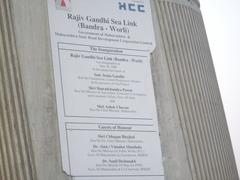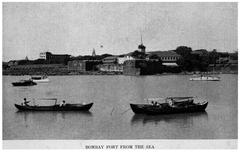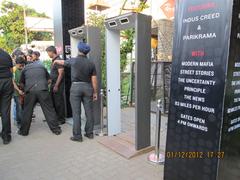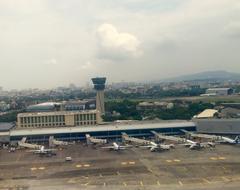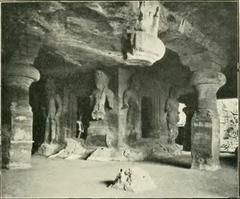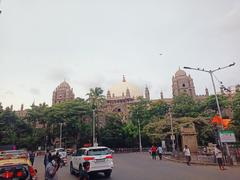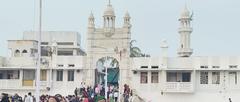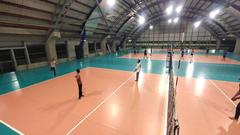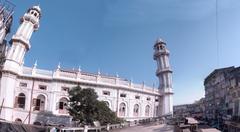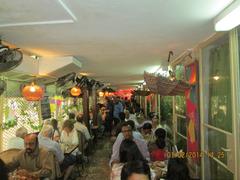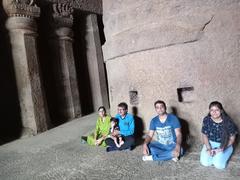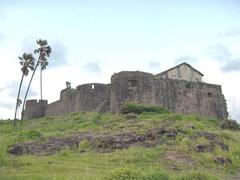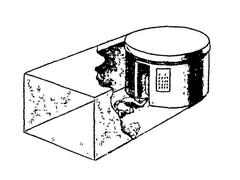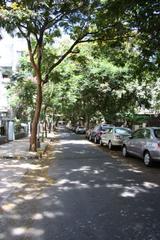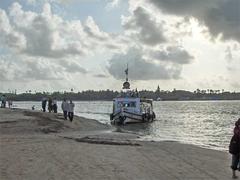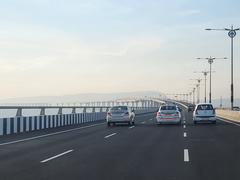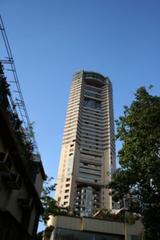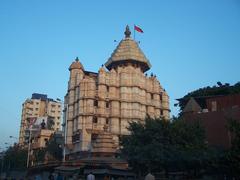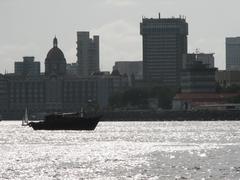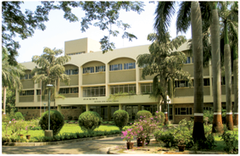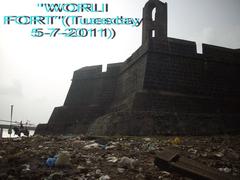Guide to Visiting Mahim Fort, Mumbai, India
Date: 17/08/2024
Introduction
Mahim Fort is one of Mumbai’s oldest and most significant historical landmarks, standing as a silent witness to the city’s evolving tapestry since the 13th century. Originally constructed by Raja Bhimdev, the fort was strategically positioned on Mahim Bay to defend the region from seaborne invaders. Over centuries, Mahim Fort has been ruled and modified by the Portuguese, Marathas, and British, each leaving a distinct imprint on its architecture and significance. Despite enduring encroachment, environmental threats, and periods of neglect, recent restoration efforts spearheaded by the Brihanmumbai Municipal Corporation (BMC) and the Archaeological Survey of India (ASI) are working to revive this monument for future generations (Wikipedia, Free Press Journal, Hindustan Times).
Table of Contents
- Early History and Construction
- Shifting Rule: Portuguese, Maratha, and British Eras
- Architectural Features
- Cultural and Historical Significance
- Visiting Mahim Fort: Hours, Tickets, and Tips
- Preservation and Restoration Efforts
- Nearby Attractions
- FAQs
- Conclusion
- References
Early History and Construction
Mahim Fort traces its roots to around 1250 AD, built by Raja Bhimdev as a defense post to safeguard his kingdom from seaborne threats. Constructed mainly from local basalt, the fort’s initial design reflected the practical needs of defense and rapid fortification, with thick walls and vantage points facing Mahim Bay.
Shifting Rule: Portuguese, Maratha, and British Eras
Portuguese Era
In the early 16th century, the Portuguese took control of Mahim Fort, recognizing its strategic importance along the Konkan coast. They reinforced the structure by adding bastions and mounting cannons, making Mahim Fort a linchpin in their coastal defense network, which included Bandra and Worli forts (Wikipedia).
Maratha and British Control
The Marathas, led by Chhatrapati Shivaji Maharaj, sought to reclaim the fort and succeeded in 1739 after several attempts. Their control was brief, as Mahim Fort was ceded to the British East India Company in 1772 via treaty. Under the British, the fort’s military importance waned, and it was repurposed as a police station and military outpost (Free Press Journal).
Architectural Features
Strategic Location and Layout
Perched between Mahim, Bandra, and Worli, the fort offers panoramic views of the Arabian Sea and Mahim Bay. Its rectangular plan features robust stone walls, bastions at key corners, and an entrance flanked by two massive bastions that once housed cannons. The fort’s design allowed defenders to monitor and control maritime activity effectively.
Blend of Styles and Key Structures
Mahim Fort’s architecture is a unique blend of indigenous, Portuguese, and British influences. Elements like the ornate gateways and chapel reveal Portuguese sensibilities, while the barracks and watchtowers reflect later modifications. Subterranean tunnels, now mostly sealed, once facilitated the rapid movement of troops and supplies (Free Press Journal).
Watchtowers, Chapel, and Interior Ruins
Inside, visitors encounter the ruins of barracks, a chapel, storage spaces, and remnants of defensive structures. The chapel, attributed to the Portuguese era, highlights the site’s layered religious and cultural history. The fort’s central courtyard, surrounded by these ruins, offers a sense of the daily life and military routines of its former occupants.
Environmental Impact and Encroachments
Mahim Fort’s coastal exposure has led to significant tidal erosion and weathering, threatening its structural integrity (GK Today). In recent decades, the fort was heavily encroached upon by informal settlements, further damaging its historic fabric (The Top Tours).
Cultural and Historical Significance
Mahim Fort is more than a military relic; it represents Mumbai’s layered history—a convergence of indigenous, colonial, and modern influences. The fort has played pivotal roles in regional conflicts, such as the Anglo-Maratha Wars, and has been central to the city’s maritime defense strategy. Its survival amidst urbanization is a testament to Mumbai’s resilience and evolving identity.
Visiting Mahim Fort: Hours, Tickets, and Tips
Hours and Entry
- Current Status: Restoration is underway, so formal visiting hours and ticketing will be announced upon reopening. Previously, the fort was open daily from 8:00/9:00 AM to 6:00 PM, with free admission.
- Guided Tours: Not officially available yet, but local guides may offer their services.
Travel Tips
- Wear comfortable footwear for uneven terrain.
- Visit during cooler months (November to February) for a more pleasant experience.
- Bring a camera for scenic views of Mahim Bay and the Bandra-Worli Sea Link.
Accessibility
- Getting There: Easily accessible via Mahim Junction (rail) and well-connected by buses and auto-rickshaws.
- Mobility: The fort’s uneven paths and steps may pose challenges for visitors with limited mobility; plans for improved accessibility are in discussion.
Preservation and Restoration Efforts
Recent Restoration Initiatives
The BMC, in partnership with the ASI and heritage consultants, has embarked on an ambitious project to restore Mahim Fort. Key steps include:
- Encroachment Removal: Over 3,000 residents living in unauthorized huts within the fort premises have been relocated (Mid-Day).
- Structural Assessment: Heritage architect Vikas Dilawari is preparing a detailed restoration plan to preserve the fort while making it accessible for the first time in over five decades (Hindustan Times).
- Community Involvement: Local residents and stakeholders are engaged in the process to foster a sense of ownership and ensure sustainable preservation.
Environmental Considerations
Conservation plans address the challenges posed by tidal erosion, pollution, and climate, employing methods and materials capable of withstanding the harsh coastal environment (Audiala).
Nearby Attractions
- Reti Bunder Beach: Enjoy the open gymnasium and a viewing tower adjacent to the fort.
- Siddhivinayak Temple: A renowned shrine to Lord Ganesha.
- Bandra-Worli Sea Link: An iconic modern structure, offering spectacular views.
- Mahim Church and Shivaji Park: Sites reflecting Mumbai’s religious and cultural diversity.
FAQs
Q: What are the visiting hours for Mahim Fort?
A: Visiting hours will be announced after restoration. Previously, the fort was open from 8:00/9:00 AM to 6:00 PM.
Q: Is there an entry fee?
A: Entry has historically been free. Check for updates as restoration nears completion.
Q: How do I get to Mahim Fort?
A: Mahim Fort is accessible via Mahim Junction (rail) and by local transport.
Q: Are there guided tours?
A: No official tours yet, but local guides may be available on-site after reopening.
Q: Is the fort accessible to people with disabilities?
A: Restoration plans include improved accessibility, but the current terrain is challenging.
Q: What else can I visit nearby?
A: Reti Bunder Beach, Bandra-Worli Sea Link, Siddhivinayak Temple, and Shivaji Park.
Conclusion
Mahim Fort is a remarkable emblem of Mumbai’s enduring heritage, embodying centuries of military, cultural, and architectural history. With its strategic coastal position, rich blend of architectural influences, and ongoing restoration, the fort is poised to re-emerge as a premier destination for both locals and tourists. Recent preservation efforts, community engagement, and government commitment offer hope that Mahim Fort will soon reclaim its place as a vibrant, accessible landmark—connecting present and future generations to the city’s storied past (Mid-Day, Times of India).
References
- Wikipedia
- Free Press Journal
- Mid-Day
- Hindustan Times
- Times of India
- GK Today
- The Top Tours
- Audiala
- Homegrown
